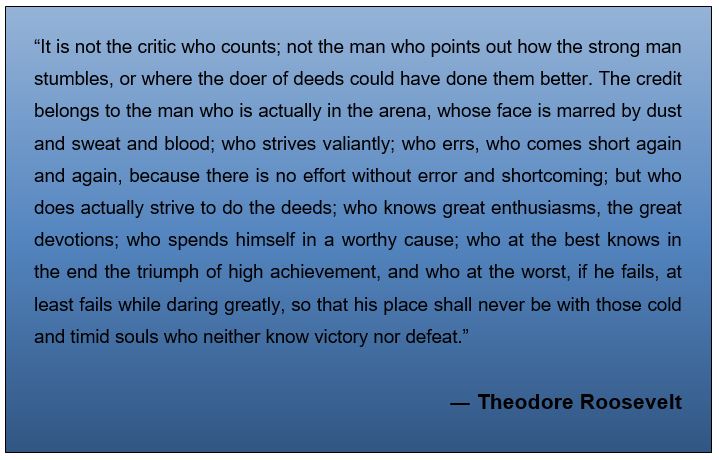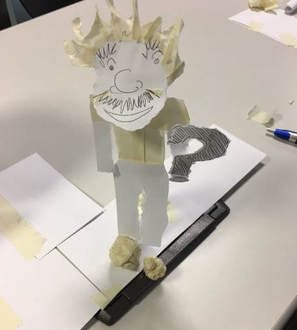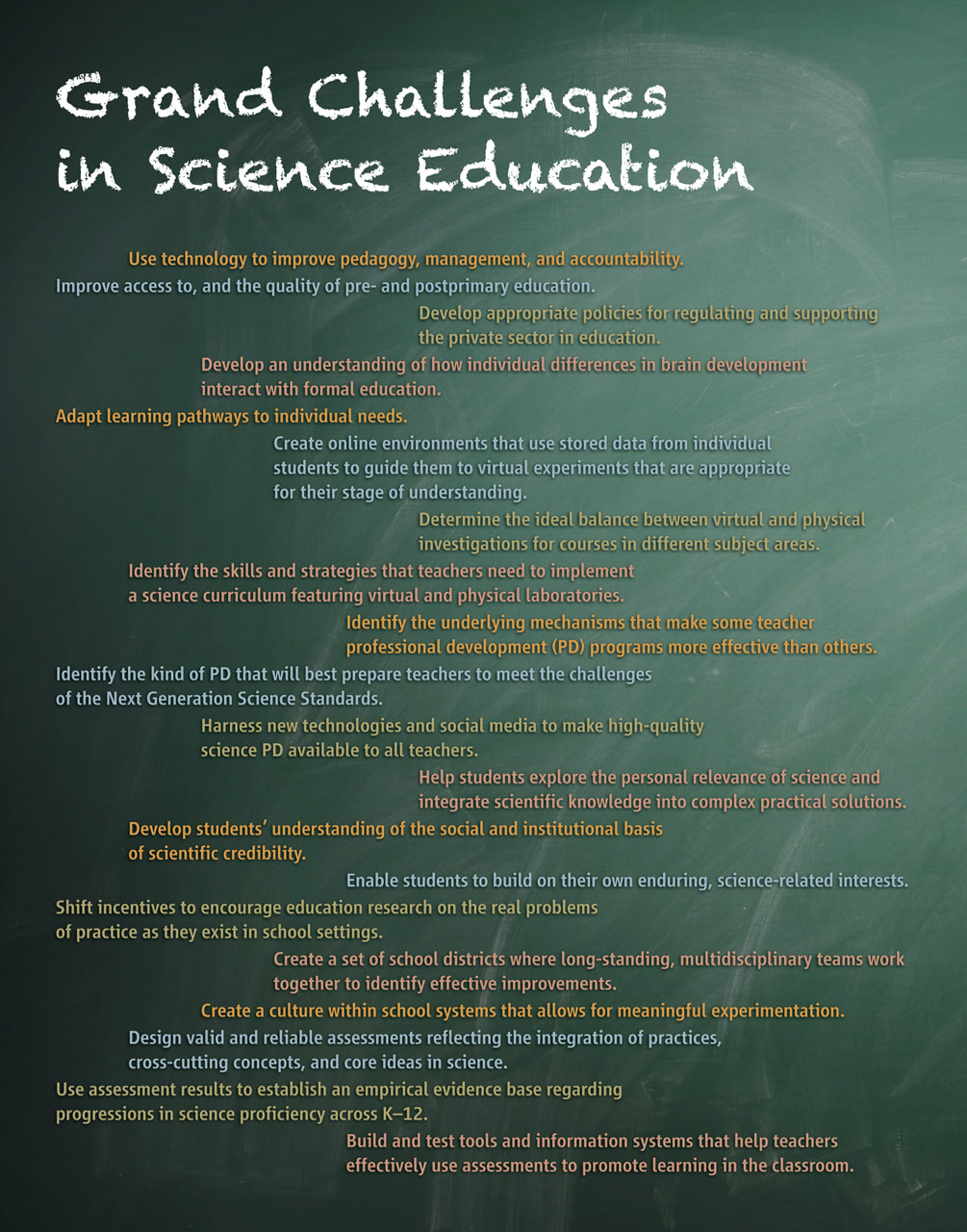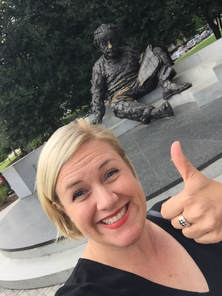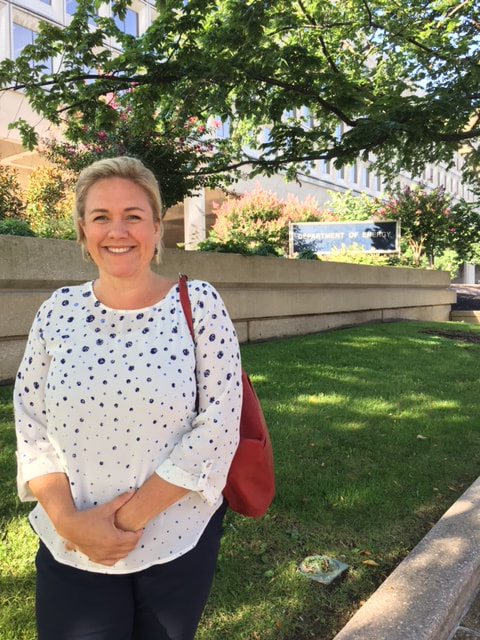|
The start of the school year always brings a tinge of nervousness, a bit of first day jitters. This year was different; although there was still uncertainty… new place, new people, new roles and new responsibility. Today was the first day of the job I’ll be leaving in one year, the Albert Einstein Distinguished Educator Fellowship. There are a total of twelve teachers serving as Fellows this year all converging on Washington D.C. from various home states. We all have different motivations for leaving our lives back home; some are looking for a permanent change, some are looking for new challenge and some are looking to reinvigorate their teaching practice. Unlike me, some of the Fellows feel unhappy and/or underappreciated in the teaching position they left. All of the fellows want to make a difference in the lives of kids and ensure our nation is benefitting from having educated citizens that understand and value science, technology, engineering and math. Our “cheerleaders in the room” welcomed us to the Fellowship, reminding us that we are unique in our willingness to uproot ourselves and “get into the ring” here in Washington, D.C. The Roosevelt quote (with appropriate pronouns implied) served as our touchstone throughout the morning.
The oversight, history and funding of the Albert Einstein Distinguished Educator Fellowship were shared with our group. The Albert Einstein Distinguished Educator Fellowship act was developed because “elementary and secondary school mathematics and science teachers can provide practical insight to the legislative and executive branches in establishing and operating education programs.” Since the act was passed in 1994, there have been 305 individuals who have served in eight federal departments or agencies. Being a federal government fellowship, there are of course many rules, regulations, forms and logistics that needed to be discussed during our orientation. It was again made clear that the Fellows are not employees of the federal government. Depending on the agency in which we are placed, the Fellows have different responsibilities and important roles while here, however we aren’t “feds!” This year, there are Fellows placed at the National Science Foundation, National Aeronautics and Space Administration, on Capitol Hill in Congressional Offices and at the Department of Energy Office of Science (me!). During the Fellowship, there will be multiple learning opportunities. We will meet with distinguished scholars and policy experts with the goal of relating everything back to the classroom; a common question I should be asking myself is, “how will I be using this information one year from now when I am back in front of students?” Additionally, a key aspect of our Fellowship is self directed professional development. Fellows must tie our professional development activities to two of three goal areas:
Plenty of Challenges for All. Hines, P., Mervis, J., Mccartney, M., Wible, B. Science. 19 Apr 2013: Vol. 340, Issue 6130, pp. 290-291 I have yet to determine my focus areas, as there are so many education issues that are of interest to me, both at the national and local levels. However, one headline from the New York Times (August 2015) best summarizes what I perceive as the greatest educational issue at both the national and local level: “Teacher Shortages Spur a Nationwide Hiring Scramble (Credentials Optional).” The recruitment and retention of highly capable teachers into STEM fields is a complex, multifaceted problem to which I might like to dedicate my time. What I find intriguing about this issue is the magnitude and complexity of the problem. I have read reports and articles about possible causes and effects of the teacher shortage (for example, the 2016 study by the Learning Policy Institute). However, given the day to day demands of my job, I have not had the time to devote to gaining a true understanding of the intricacies of the problem. My personal experience with the teacher hiring and retention problem has been via my work on the University of Washington’s (UW) Professional Educators Advisory board. The UW has seen a noticeable decreasing trend in the number of applicants to their Master’s in Teaching Program. Many potential teacher candidates are either choosing to not become teachers or are electing quicker, non-traditional routes to initial teacher certification. In addition to fewer people pursuing careers in education, those who elect to enter educational careers often do not stay in the field. In my role on a Washington State policy advisory panel, I have explored the effects that secondary tier certification demands placed on teachers who are already struggling to find the time (and often money) to dedicate to a teaching career. I know the trends in Washington State are mirrored nationally. The teacher shortage challenge facing public education is immense, necessitating a multifaceted approach to a solution. Perhaps one piece of the solution puzzle is to increase public awareness and perception of the important role of STEM teachers. I believe that the public has a misunderstanding of the work of STEM (and all) teachers; one that is perhaps more negative than reality. Who can blame people for not wanting to become (or remain) a teacher when the messages sent from those in the field are undesirable. Yes, class sizes are too large. Correct, there is not enough time or space or supplies or money, or… or… or…… What is not often communicated to the public is the benefits of teaching; the great delight, immense humor, incredible learning and a true sense of making a difference in the life of others. I would like to find ways for teachers to spread positive messages about the joy and value of teaching. I’ll leave you will a quick selfie snapped at the Albert Einstein Memorial at the National Academies of Science Building. Don’t fret, a much more professional head shot (hopefully with less forehead wrinkle) will eventually be posted too!
|
Archives
July 2018
|
I give many of my IB Biology resources away, for the benefit of students and teachers around the world.
If you've found the materials helpful, please consider making a contribution of any amount
to this Earthwatch Expedition Fund.
Did I forget something? Know of a mistake? Have a suggestion? Let me know by emailing me here.
Before using any of the files available on this site,
please familiarize yourself with the Creative Commons Attribution License.
It prohibits the use of any material on this site for commercial purposes of any kind.
If you've found the materials helpful, please consider making a contribution of any amount
to this Earthwatch Expedition Fund.
Did I forget something? Know of a mistake? Have a suggestion? Let me know by emailing me here.
Before using any of the files available on this site,
please familiarize yourself with the Creative Commons Attribution License.
It prohibits the use of any material on this site for commercial purposes of any kind.
